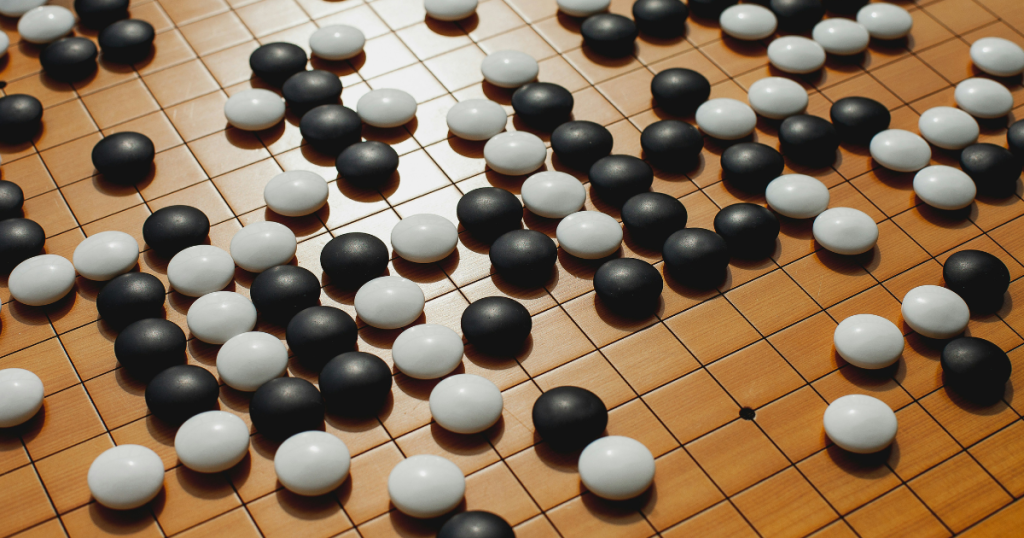Philippines challenges China in a “Go” game in the West Philippine Sea

By Manuel Mogato | Date 05-15-2024
MANILA — China invented and mastered the abstract strategy board game “Go” before introducing it to the Koreans, the Japanese, and the world. It’s the Oriental board game equivalent to chess played in the West and is usually played by two players.
A player wins by occupying more territories on the board and using white or black stones to encircle an opponent’s pieces.
The West Philippine Sea is like a giant “Go” board with China sending hundreds of vessels – Navy, Coast Guard, and militia – to occupy Philippine maritime spaces near uninhabited features.
Under the 2002 Declaration on Conduct of Parties in the South China Sea (DOC), an informal code of conduct between China and the Association of Southeast Asian Nations (ASEAN), occupying uninhabited features or building new structures is prohibited to manage territorial disputes.
Thus, China did not build structures and transformed Scarborough Shoal into an artificial island in 2012. But, it expanded the seven features it already occupied, building ports and airfields in the manmade islands.
What Beijing did was send hundreds of Chinese vessels to scatter across the vast expanse of the South China Sea, particularly in the Philippine maritime zones, to gain control of the territories.
It’s a classic “Go” game as Chinese vessels literally loiter around uninhabited features in the Reed Bank and other parts of the West Philippine Sea to assert its illegal nine-dash-line claim in the strategic waters.
Over the past months, Chinese vessels have also encircled Philippine-occupied features, like Pagasa Island, Kota, Patag, Lawak, and Ayungin in the West Philippine Sea.
China can afford to deploy dozens and even hundreds of vessels in the disputed waters because it has the world’s largest naval and coast guard fleets.
Former navy and coast guard vessels had been converted into militia ships with reinforced steel hulls, which were used to ram other vessels, particularly from the Philippines and Vietnam.
Despite its limitations and fewer assets, the Philippines has started to play “Go” with China, deploying its state-of-the-art coast guard vessel, BRP Teresa Magbanua, to Escoda Shoal, which has become a new target of occupation by China.
Commissioned in May 2022, the Japanese-built, 97-meter-long boat is the largest and most modern Coast Guard vessel in the Philippine Coast Guard.
It has an endurance of over 15 days, but it has remained in Escoda Shoal for almost a month now. The smaller, 44-meter-long Coast Guard multi-role response vessel (MRRV) has been resupplying BRP Teresa Magbanua to prevent Chinese research vessels from returning and occupying Escoda or Sabina Shoal.
Sabina Shoal is very strategic, about 126 nautical miles west of Palawan, and the rendezvous point of the Coast Guard when escorting a civilian supply boat delivering food and water to troops stationed at BRP Sierra Madre in Ayungin Shoal.
China has strategic interests in occupying Sabina Shoal. It installed three buoys in 1996 after seizing control of Mischief Reef.
The Philippine Navy confiscated the buoys, and the Coast Guard installed its navigational aid equipment in the area.
In 2021, the Coast Guard found seven Chinese militia vessels around Sabina Shoal but drove away the vessels after a radio challenge.
Recently, China sent survey ships into the area, prompting the Philippines to deploy BRP Teresa Magbanua. It never left Sabina Shoal.
A Philippine Coast Guard vessel has also started to have a constant presence in Scarborough Shoal, challenging China’s claim on the rocky outcrop.
It’s the Philippines’ own “Go” game in the West Philippine Sea. Is it sustainable?
The Philippine Coast Guard has only 21 vessels capable of reaching the West Philippine Sea, including two 97-meter multi-role response vessels BRP Teresa Magbanua and Melchora Aquino.
It has an 83-meter BRP Gabriela Silang built by France and 10 44-meter boats built by Japan.
The Coast Guard also used 14 Bureau of Fisheries and Aquatic Resources (BFAR) Offshore Patrol Vessels, like BRP Lapu-Lapu at Francisco Dagohoy.
The Philippines has allies — like the United States, Australia, and Japan —that can also help patrol its maritime zones.
The Coast Guard plans to acquire three more 97-meter-long MRRVs from Japan and Australia promised two Guardian-class boats.
This pales in comparison with China’s hundreds of Coast Guard and militia vessels.
Can the Philippines win the “Go” game against China? It will not, but it could play cleverly by occupying strategic locations to prevent China from moving closer to Palawan.
Tags: Security
